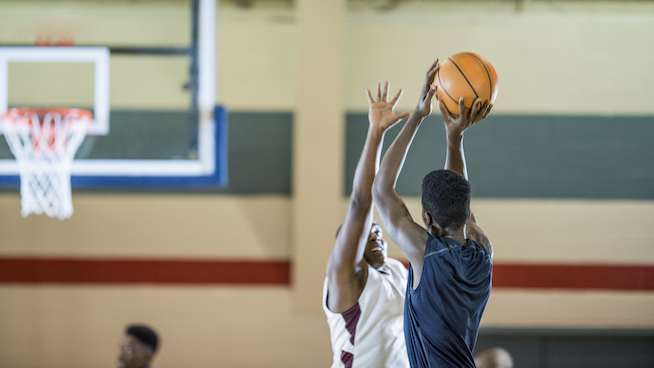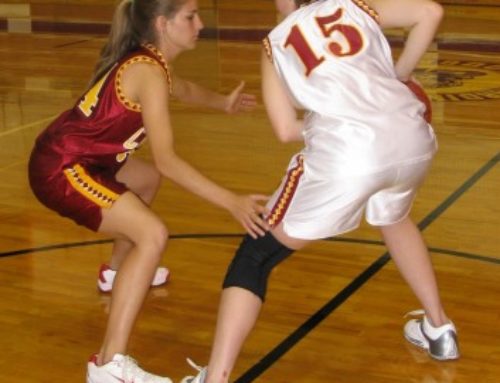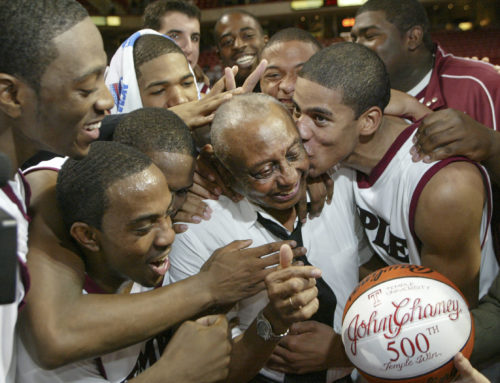Coaches have long searched for certain aspects that affect winning. The best coaches know that raw statistics don’t hold too much weight if the eye test doesn’t match the numbers. However, one of the basic statistics that is not only evident when watching the game, but provides basis for more advanced stats, is shooting percentage. It is important to know what a good percentage is, because coaches can recognize how efficient their players are through this statistic. Although shooting percentage doesn’t necessarily correlate with advanced stats such as true shooting percentage, a good one is an indicator of an efficient player. The concept of a good shooting percentage is relative as it depends on where the player is shooting from and what position does he/she play.
Shooting percentage by area of shooting
A good percentage varies based on the area of the floor the player is shooting from. We can’t compare percentages from different areas because the difficulty of the shot varies as well. For example, a player could shoot an efficient 40% from the perimeter, while the same percentage would be considered terrible from around the rim. Generally, a good percentage in shots from outside is above 33,3% because the points per possession would be 1 or over. Similarly, a two-pointer percentage would be considered good if it is over 50%. However, the closer the shot, the percentage should go up. Elite finishers around the rim usually have a percentage north of 60% when the shot is from the painted area. When expanded to a team perspective, we need to adjust the percentage expectations. While there might be a 40% three-point shooter on the team, other, lesser shooters need to keep the defenses honest so the team percentage might be lower. Even when we take the whole team in consideration, the rule about points per possession stands. If a team on average scores one point every possession, the team percentage should be considered good. The percentage-perspective also help coaches to guide players towards working on their weaknesses. Seeing a pattern of bad shooting nights from a certain area can lead players to focus on improving from those positions.
Position-based percentage
Player’s expected percentages depends also on the position they play. Different positions demand different percentages. For example, centers should maximize the efficient shots in the pain, while their percentages don’t need to be that great from three. Although modern centers are shifting towards the perimeter, these shots are still very important because of their efficiency. The percentages of centers from the three is even more important because of this revolution. For centers, a 30% shooting can be considered good because they can stretch the floor and keep defensive centers honest. That way there is no one to protect the paint and the shooting ability enables easier drives to the rim. On the other hand, guards need to have a higher percentage from shots that are outside the paint, especially the ones from three. Because of the size disadvantage it is harder for them to find shots at the rim so they show their efficiency from outside. A shooting percentage higher than 35 percent from three can be considered good for guards as they need to hit higher number of shots from outside.
The same concept applies to free throw percentage. The standard for bigs in free throw percentage are lower than those fore guards, although it is becoming much frequent for big-men to have high success rate from the line. A great shooter from the free-throw line hits between 80 and 90 percentage of his/hers trips to the line. A center with a good stroke usually shoots north of 70 percent. The free-throw value doesn’t match our points per position theory, but it is the most efficient shot possible because of no defense.
Fact is, coaches need to know their personnel well in order to maximize their roster. Implementing a game plan that forces shots towards the best shooters can create a very effective offensive system for the team. Knowing the players’ shooting percentage is key for that and good coaches maximize the abilities of their players. So when a player demands more looks on offense, you can point at shooting percentage as evidence of why that shouldn’t be the case.





